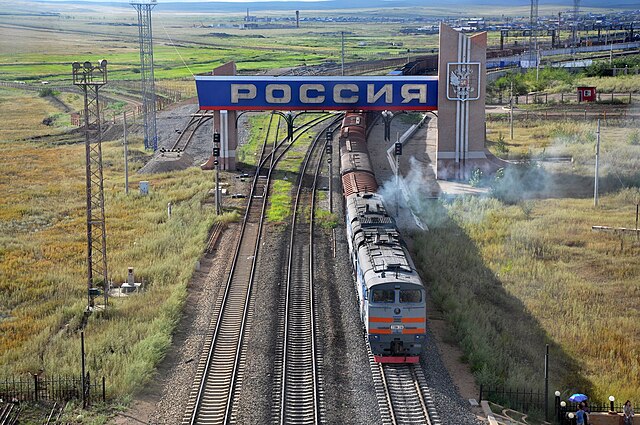The Argun or Ergune is a 1,620-kilometre (1,010 mi) long river that forms part of the eastern China–Russia border, together with the Amur. Its upper reaches are known as Hailar River in China. The Argun marks the border between Russia and China for about 944 kilometres (587 mi), until it meets the Amur.
Taken from Shiwei, Inner Mongolia, China. Russia is on the opposite side.
The Chinese–Russian border or the Sino-Russian border is the international border between China and Russia. After the final demarcation carried out in the early 2000s, it measures 4,209.3 kilometres (2,615.5 mi), and is the world's sixth-longest international border. According to the Russian border agency, as of October 1, 2013, there are more than 160 land border crossings between Russia and China, all of these border crossings are open 24 hours. There are crossing points established by the treaty including railway crossings, highway crossings, river crossing, and mostly ferry crossings.
The two countries' border signs at Manzhouli/Zabaykalsk
The shifting eastern border from 1689-1860
Western section of the border in the 1970s
A train passing the border crossing from Zabaykalsk in Russia to Manzhouli in China. The banner reads "Rossiya", Russia in the Russian language (coordinates: 49°37′49.24″N 117°20′20.68″E / 49.6303444°N 117.3390778°E / 49.6303444; 117.3390778)





